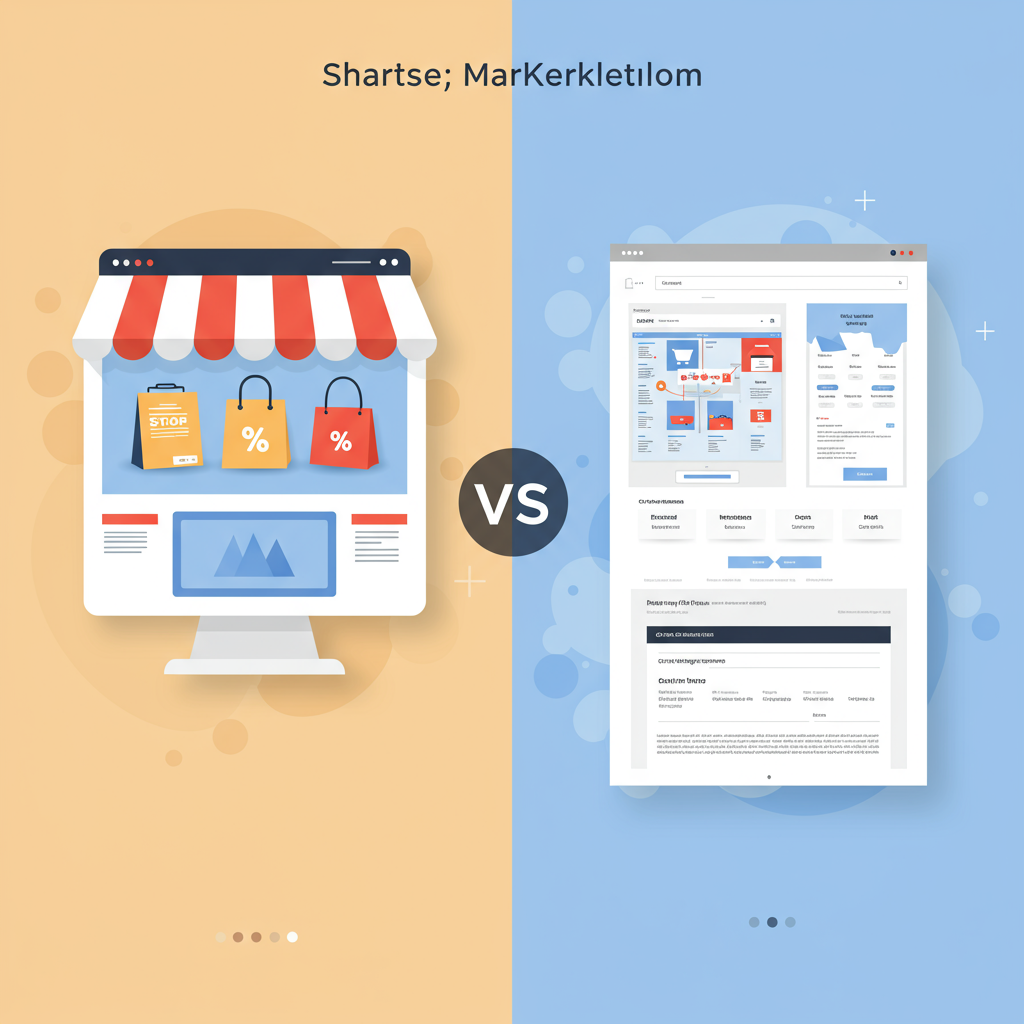Navigating the Strategic Choice for Your Online Business
As a merchant navigating the vast e-commerce landscape, one of the most pivotal decisions you’ll face is where to establish your digital storefront.
Should you pour your resources into building a standalone, single-brand store, or should you leverage the immense reach of established online marketplaces?
This isn’t a trivial choice; it profoundly impacts your brand identity, customer relationships, marketing strategy, and ultimately, your profitability.
Today, I want to delve deep into this dilemma, specifically through the lens of Shopify, a platform many of us rely on.
Let’s first define what we mean by a ‘single-brand Shopify store.’
This is your own dedicated e-commerce website, built and hosted on Shopify, where you sell only your products under your brand name.
It’s your digital flagship store, entirely under your control.
The primary advantage here is unparalleled brand control. Every pixel, every word, every customer interaction reflects your unique brand vision.
You dictate the user experience, from product discovery to checkout, ensuring it aligns perfectly with your brand’s aesthetic and values.
Another significant benefit is direct customer relationships. You own the customer data, allowing for personalized marketing, loyalty programs, and direct communication.
This direct connection fosters loyalty and provides invaluable insights into customer behavior, which is gold for product development and marketing optimization.
Furthermore, your profit margins are generally higher. While Shopify has its fees, you’re not paying a percentage of each sale to a third-party marketplace.
You also have complete control over your pricing strategy, promotions, and return policies without external interference.
However, building a single-brand store from scratch comes with its own set of challenges.
The biggest hurdle is traffic generation. You are solely responsible for driving visitors to your site, which often requires significant investment in SEO, paid ads, social media marketing, and content creation.
Establishing trust can also be slower. New customers might be hesitant to purchase from an unknown website compared to a familiar marketplace.
Now, let’s consider the ‘marketplace’ option. For a Shopify merchant, this typically means integrating your Shopify store with platforms like Amazon, Etsy, eBay, or even specialized niche marketplaces.
The most compelling advantage of selling on marketplaces is immediate access to a massive, pre-existing audience.
Millions of potential customers are already browsing these platforms, actively looking to buy. This significantly reduces your initial marketing burden.
Marketplaces also offer inherent trust. Consumers are generally comfortable purchasing from Amazon or Etsy due to their established reputation, buyer protection policies, and streamlined checkout processes.
This can be particularly beneficial for new brands or those selling products that require a higher degree of trust.
However, the downsides are considerable. The most obvious is the cost: marketplaces charge various fees, including listing fees, referral fees (a percentage of each sale), and sometimes fulfillment fees.
This directly impacts your profit margins, often making them significantly lower than sales through your own store.
Brand control is severely limited. Your product listings must conform to the marketplace’s templates and guidelines, making it difficult to differentiate your brand visually or experientially.
You also have less direct access to customer data. The marketplace owns the customer relationship, limiting your ability to build long-term loyalty or conduct targeted marketing campaigns.
Competition is fierce. You’re often listed alongside hundreds or thousands of similar products, making it harder to stand out without aggressive pricing or advertising within the marketplace.
Policy changes by the marketplace can also impact your business overnight, leaving you with little recourse.
So, how do you choose? It’s rarely an either/or situation. Many successful merchants adopt a hybrid approach.
They use marketplaces as a customer acquisition channel, leveraging their reach to introduce new customers to their brand.
Once a customer has purchased, the merchant might then try to migrate them to their own Shopify store for future purchases, offering exclusive discounts or loyalty benefits.
Consider your product type. Highly commoditized products might benefit more from marketplace exposure, while unique, high-value, or custom items might thrive on a dedicated brand site.
Your target audience also plays a role. Where do your ideal customers typically shop online?
Your marketing budget and capabilities are crucial. Can you afford to drive traffic to your own site, or do you need the built-in audience of a marketplace?
Finally, think about your long-term goals. Are you building a recognizable brand with a loyal following, or are you primarily focused on moving inventory?
In my experience, a single-brand Shopify store is essential for building a sustainable, valuable brand asset.
It’s where you cultivate your community, tell your story, and truly differentiate yourself.
Marketplaces, on the other hand, are powerful tools for expanding reach, testing new products, and generating initial sales volume.
The optimal strategy often involves starting with a marketplace to gain traction and then investing heavily in your Shopify store as your brand grows.
Or, conversely, launching your Shopify store first and then strategically expanding to marketplaces to tap into new customer segments.
The key is to understand the strengths and weaknesses of each model and how they align with your specific business objectives.
There’s no one-size-fits-all answer, but by carefully weighing these factors, you can make an informed decision that propels your e-commerce business forward.
What do you think about this article? Do you lean more towards a single-brand store or marketplaces, and why?






